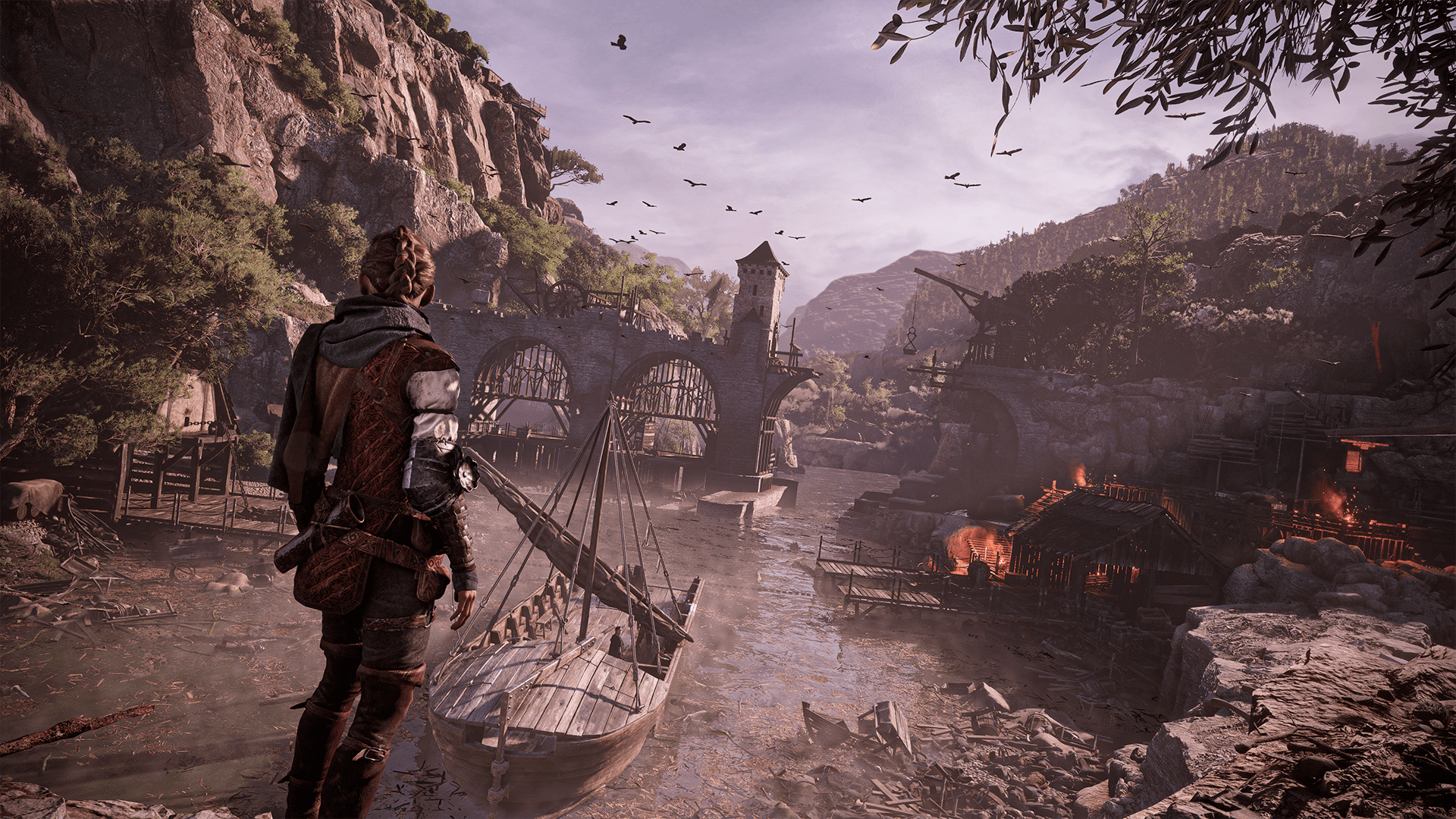
I’m a little worried about A Plague Tale: Requiem's stealth, but its narrative and characterization still have lots of potential.
I loved A Plague Tale: Innocence. Despite its straightforward moment-to-moment gameplay, it ended up being one of my favorite games of 2019 thanks to the fantastic art direction, wonderful performances, and gripping story. While I am very curious to see where the story goes in Requiem, the gameplay--faults and all--feels a little too familiar. Most of these issues were easy to overlook back in 2019 when it seemed like Asobo Studio was punching well above its weight. Now, however, these same issues are harder to forgive.
Requiem takes place shortly after the first game and is set in 14th century France during the Bubonic Plague, at the outset of the Hundred Years' War. Although both games are set in a realistic depiction of France, the story often flirts with gothic supernatural elements. This is easily one of the coolest things about Innocence and Requiem, and what sets it apart from most third-person adventure games. The world is so wonderfully detailed and everything has a macabre sheen to it.
Like in the original, you play as Amicia, a young girl tasked with escorting her younger brother Hugo through a plague-stricken world infested with rats and occupied by hostile soldiers. Along with Amicia’s trusty sling, Requiem introduces a crossbow. As you’d expect, the crossbow is much deadlier than Amicia’s sling, however, bolts for it are hard to come by. This means that, like Innocence, most encounters demand a stealthier approach. You can throw objects to attract enemy attention, squeeze under tight spaces to hide from view, and track an enemy’s movements with a vision mode called Ratsense. Yes, Ratsense.
The first few enemy encounters in the preview I played were not great. After Amicia gets chased out of a lovely little pilgrim encampment, she stumbles into some ruins and soldiers quickly close in on her. These first few areas are cramped and filled with dead ends, making it far too easy for Amicia to get trapped. If Amicia gets caught by a soldier, he knocks her on the ground, Hugo helps her back up, and the soldier conveniently waits for a second to give you a chance to react. From here, Amicia can stun the soldier with a counter, kill the soldier with a single-use knife, or run. If Amicia fails to react, the guard will kill her.
It’s nice having more options in combat than in the previous game, but the first few areas don't really support them. There weren’t many avenues of approach and when I did get spotted and tried to run, I’d get cornered by guards. Even if I did counter or kill a guard, there usually wasn’t enough room to get past the rest of the soldiers. This meant that pure stealth was really my only option. I quickly realized that if I got caught, it was best to just restart the encounter.
I don’t mind stealth games--in fact I love Metal Gear Solid and I’m a diehard Splinter Cell fan--but being sneaky isn’t what makes those games fun. It’s how you can poke and prod at the simulation, allowing you to get past enemies in creative ways. In these early encounters, I felt like my best bet was to throw pots into conveniently placed armor bins to draw an enemy’s attention. This distraction-based approach to stealth wasn’t great in the first game, and it doesn't seem to have evolved all that much here.
Thankfully, options did open up a bit more as I progressed. Once Amicia and Hugo made it through the caverns, they ended up in an open canyon. There was grass to hide in and cliffs to clamber up, creating more room to maneuver. Using Hugo’s Ratsense and careful timing, I managed to slip by most of the enemies. I say most because I found my way onto a ridge and hid behind a bush to wait for a guard to pass. However, the guard spotted me right through the bush and rushed me. I tried to hop down from the ridge, but an invisible wall stopped me in my tracks. The guard cornered Amicia and killed her. That inconsistency with the AI, combined with the arbitrary restriction of the invisible wall, robbed the conflict of any tension and concluded with a cheap death.
New to A Plague Tale: Requiem is the ability to directly control a mischief of rats and turn any enemy who dares to venture away from an open flame into a snack. It adds a nice wrinkle to combat that lets you quickly dispatch enemies if there’s a rat horde nearby. Apart from a few tutorialized encounters, Hugo can only control the rats for a limited amount of time, so you’ll need to plan your route carefully. These segments felt a lot more dynamic. One in particular took place in an open air bath house that spilled out into a field. There was plenty of room to maneuver, and systematically picking off enemies with the rats to clear a path for Amicia and Hugo added a much-needed layer of strategy to the combat.
The second half of the preview followed Amicia, Hugo, and a gruff soldier named Arno as they searched for a boat. The first part of this chapter mainly consisted of puzzles as the trio navigated through a rat-infested cave system. The puzzles weren't complicated, but they did offer a welcome change of pace from the combat. Using Amicia’s sling and specialized ammo, you needed to carefully light a path through the cave so the party could safely pass through. I’m curious to see how these puzzles evolve as Amicia's arsenal expands.
Combat issues aside, what I am really looking forward to in Requiem is the narrative. This preview consisted of two chapters that took place roughly in the middle of the game, so it was tough to follow along with the plot. That said, the acting seemed just as strong as it was in the first game. Hugo’s voice actor in particular stood out. Despite all the horrific stuff he’s seen, there was still an innocent charm to him that offers a reprieve from the harsh world.
I ran into quite a few bugs during my preview, but bugs are to be expected when it comes to pre-release builds. The game is incomplete and typically developers use that final stretch of development to squash remaining glitches. However, A Plague Tale: Requiem is out in just over a month and I had numerous progress-halting bugs that forced me to reload encounters and restart entire sections.
In one instance, Arno asked me to light his shield on fire in order to get through an area overrun with rats. Unfortunately Arno refused to brandish his shield so I couldn’t light it. In another situation, I simply couldn’t crouch. I checked the key bindings, and swapped from mouse and keyboard to a controller to no avail. Reloading the save didn’t fix the issue so ultimately I restarted the section.
While Asobo Studio does have some time to iron out these issues, it’s worth keeping an eye on the bug situation as we approach the game’s release date. I hope these issues are exclusive to me and my setup, but in my experience, that’s not usually the case.
Overall, I am cautiously optimistic for Requiem. I am very excited to see where Asobo takes the story and its memorable cast of characters, even if the combat does end up falling flat for me.
A Plague Tale: Requiem comes to PC, PlayStation 5, and Xbox Series S and X on October 13. Be sure to keep an eye out for our review in the coming weeks.




